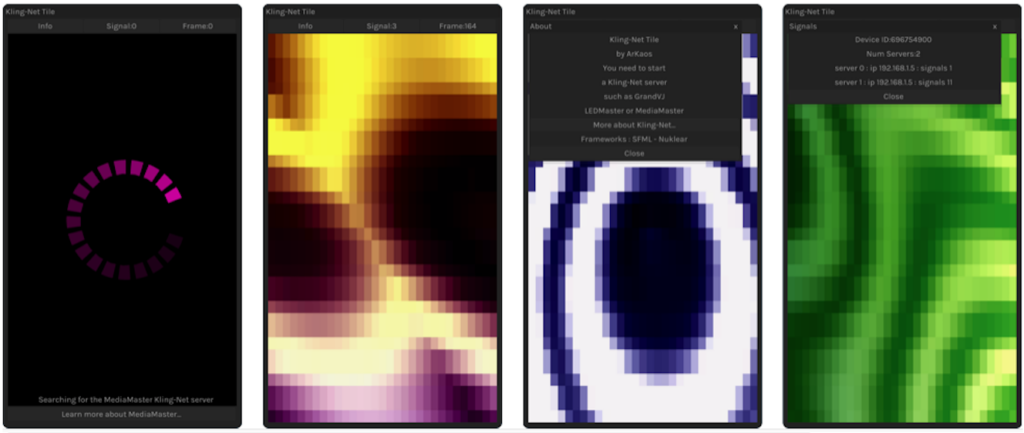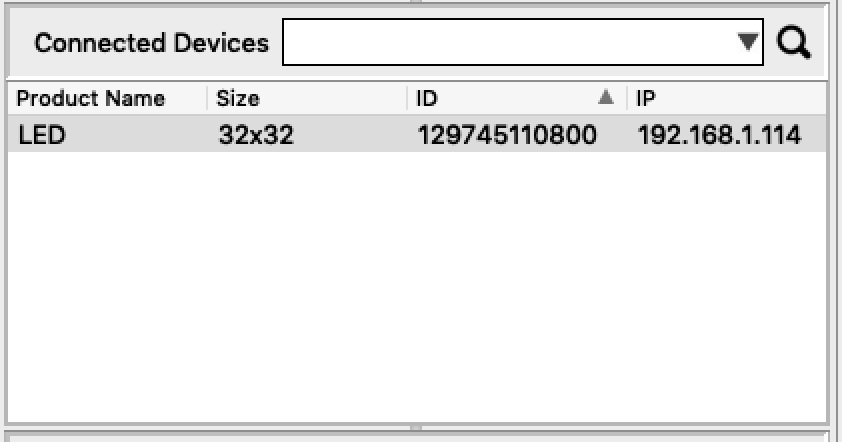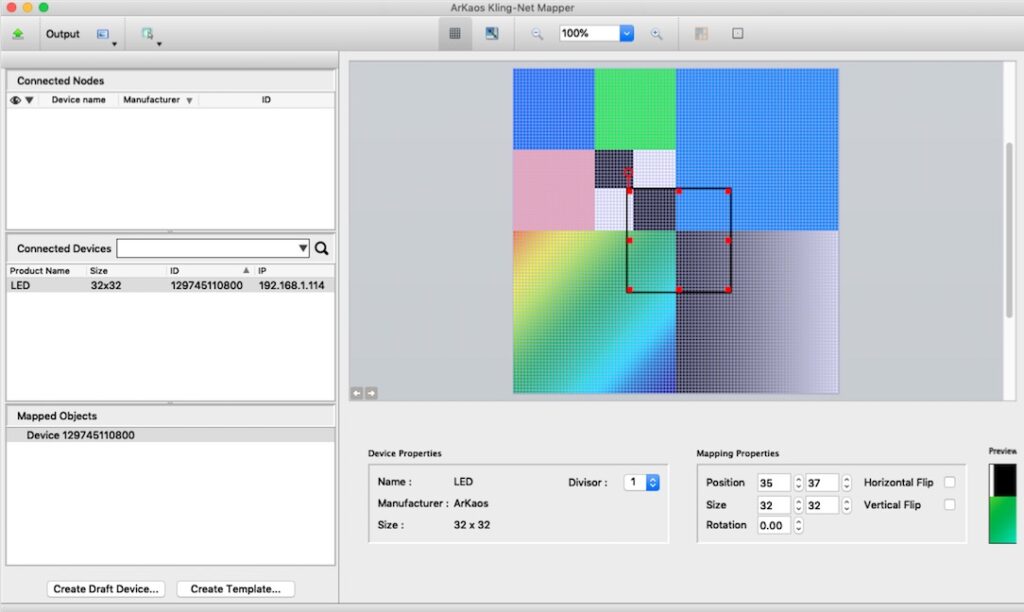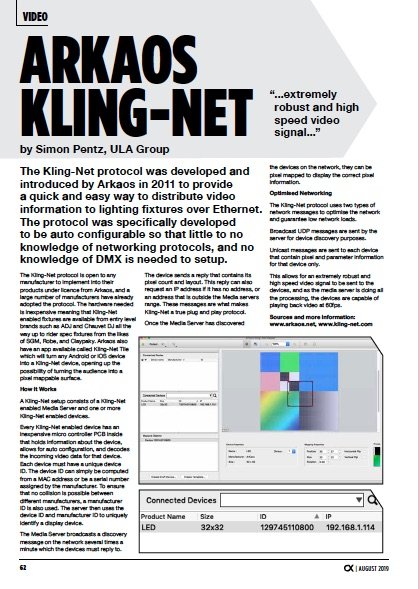News
23 Aug 2019
Arkaos Kling-Net

Subscribe to CX E-News
VIDEO
Arkaos Kling-Net
by Simon Pentz, ULA Group.
The Kling-Net protocol was developed and introduced by Arkaos in 2011 to provide a quick and easy way to distribute video information to lighting fixtures over Ethernet. The protocol was specifically developed to be auto configurable so that little to no knowledge of networking protocols, and no knowledge of DMX is needed to setup.
The Kling-Net protocol is open to any manufacturer to implement into their products under licence from Arkaos, and a large number of manufacturers have already adopted the protocol.
The hardware needed is inexpensive meaning that Kling-Net enabled fixtures are available from entry level brands such as ADJ and Chauvet DJ all the way up to rider spec fixtures from the likes of SGM, Robe, and Claypaky.
Arkaos also have an app available called Kling-Net Tile which will turn any Android or iOS device into a Kling-Net device, opening up the possibility of turning the audience into a pixel mappable surface.
How it Works
A Kling-Net setup consists of a Kling-Net enabled Media Server and one or more Kling-Net enabled devices. Every Kling-Net enabled device has an inexpensive micro controller PCB inside that holds information about the device, allows for auto configuration, and decodes the incoming video data for that device.
Each device must have a unique device ID. The device ID can simply be computed from a MAC address or be a serial number assigned by the manufacturer. To ensure that no collision is possible between different manufacturers, a manufacturer ID is also used. The server then uses the device ID and manufacturer ID to uniquely identify a display device.
The Media Server broadcasts a discovery message on the network several times a minute which the devices must reply to. The device sends a reply that contains its pixel count and layout. This reply can also request an IP address if it has no address, or an address that is outside the Media servers range.
These messages are what makes Kling-Net a true plug and play protocol. Once the Media Server has discovered the devices on the network, they can be pixel mapped to display the correct pixel information.
Optimised Networking
The Kling-Net protocol uses two types of network messages to optimise the network and guarantee low network loads. Broadcast UDP messages are sent by the server for device discovery purposes.Unicast messages are sent to each device that contain pixel and parameter information for that device only.
This allows for an extremely robust and high speed video signal to be sent to the devices, and as the media server is doing all the processing, the devices are capable of playing back video at 60fps.
Sources and more information:
www.arkaos.net
www.kling-net.com
CX Magazine – August 2019 Entertainment technology news and issues for Australia and New Zealand – in print and free online www.cxnetwork.com.au
© CX Media
Subscribe
Published monthly since 1991, our famous AV industry magazine is free for download or pay for print. Subscribers also receive CX News, our free weekly email with the latest industry news and jobs.








